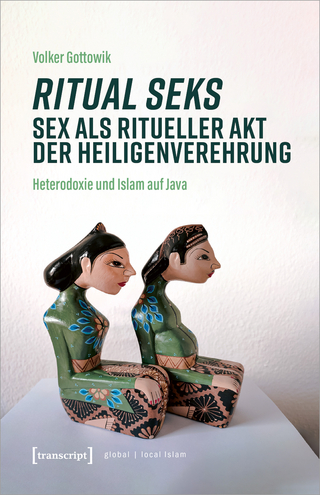
Flowers That Kill
Stanford University Press (Verlag)
978-0-8047-9589-0 (ISBN)
Flowers That Kill proposes an entirely new theoretical understanding of the role of quotidian symbols and their political significance to understand how they lead people, if indirectly, to wars, violence, and even self-exclusion and self-destruction precisely because symbolic communication is full of ambiguity and opacity. Using a broad comparative approach, Emiko Ohnuki-Tierney illustrates how the aesthetic and multiple meanings of symbols, and at times symbols without images become possible sources for creating opacity which prevents people from recognizing the shifting meaning of the symbols.
Emiko Ohnuki-Tierney is the William F. Vilas Professor of Anthropology at the University of Wisconsin. She is the author of numerous books, including Illness and Culture in Contemporary Japan (7th printing in 1997) and Rice as Self: Japanese Identities Through Time (3rd printing in 1995), the editor of Culture Through Time (Stanford, 1991), and contributor to Golden Arches East (Stanford, 2006).
Contents and AbstractsIntroduction: Opacity, Misrecognition, and Other Complexities of Symbolic Communication chapter abstractAs the animal considered closest to humans, the monkey is an important symbol in Japanese culture. Its symbolism consists of three major themes: mediator, scapegoat, and clown, each acquiring a dominant meaning in a particular historical period, but all three always constituting a palimpsest. As expressed in the monkey performance, its symbolism involves a subversive element—against the stratification in medieval times, against militarism at the height of Japan's imperial aggression, defiance against a social superior, and questioning the throne on which humans sit, ruling over all other animals. Yet, it never ignited a revolution or a social protest, even when the monkey was symbolically associated with the discriminated social group within which the monkey trainers were recruited, precisely because the simultaneous presence of the multiplicity of its meaning prevents any communicative clarity.
1Japanese Cherry Blossoms: From the Beauty of Life to the Sublimity of Sacrificial Death chapter abstractThe universe represented by Japanese cherry blossoms is full of paradoxes that become a generative power operating at both individual and collective level—simultaneously subverting and upholding the cultural and societal structure. Cherry blossom viewing is an arena for developing the collective identity of various social groups, and ultimately, the Japanese as a whole. All, including the self, are beautiful. When the Japanese military state foregrounded the symbolism of cherry blossoms to represent the sacrifice for Japan, hardly anyone, including the soldiers, recognized the change. The Japanese cherry blossoms offer an excellent example of how multiple meanings of a symbol and their aesthetic contribute to the ambiguity and opacity of communication through symbols.
2European Roses: From "Bread and Roses" to the Aesthetization of Murderers chapter abstractLike Japanese cherry blossoms, roses in Western European cultures are assigned a large number of meanings: Christ and the Virgin, birth, death and rebirth, love, beauty, life, joy and sorrow. As an important symbol of the common people against the establishment, the rose occupied a central place in the May Day festivals in medieval Europe, later leading to its role in the festival of the French Revolution. At the end of the nineteenth century, it became the symbol of the Socialist International. The rose as an important symbol of love and comradeship among workers was then used and abused to portray the dictator—Stalin and Hitler in particular—as the benevolent "Father" who loves the people. This flower is another example of how aesthetic and multiple meanings lead to the opacity of the message, preventing people to see the thorns behind the beauty.
3The Subversive Monkey in Japanese Culture: From Scapegoat to Clown chapter abstractAs the animal considered closest to humans, the monkey is an important symbol in Japanese culture. Its symbolism consists of three major themes: mediator, scapegoat, and clown, each acquiring a dominant meaning in a particular historical period, but all three always constituting a palimpsest. As expressed in the monkey performance, its symbolism involves a subversive element—against the stratification in medieval times, against militarism at the height of Japan's imperial aggression, defiance against a social superior, and questioning the throne on which humans sit, ruling over all other animals. Yet, it never ignited a revolution or a social protest, even when the monkey was symbolically associated with the discriminated social group within which the monkey trainers were recruited, precisely because the simultaneous presence of the multiplicity of its meaning prevents any communicative clarity.
4Rice and the Japanese Collective Self: Purity of Exclusion chapter abstractAs the animal considered closest to humans, the monkey is an important symbol in Japanese culture. Its symbolism consists of three major themes: mediator, scapegoat, and clown, each acquiring a dominant meaning in a particular historical period, but all three always constituting a palimpsest. As expressed in the monkey performance, its symbolism involves a subversive element—against the stratification in medieval times, against militarism at the height of Japan's imperial aggression, defiance against a social superior, and questioning the throne on which humans sit, ruling over all other animals. Yet, it never ignited a revolution or a social protest, even when the monkey was symbolically associated with the discriminated social group within which the monkey trainers were recruited, precisely because the simultaneous presence of the multiplicity of its meaning prevents any communicative clarity.
5The Collective Self and Cultural/Political Nationalisms: Cross-Cultural Perspectives chapter abstractAs the animal considered closest to humans, the monkey is an important symbol in Japanese culture. Its symbolism consists of three major themes: mediator, scapegoat, and clown, each acquiring a dominant meaning in a particular historical period, but all three always constituting a palimpsest. As expressed in the monkey performance, its symbolism involves a subversive element—against the stratification in medieval times, against militarism at the height of Japan's imperial aggression, defiance against a social superior, and questioning the throne on which humans sit, ruling over all other animals. Yet, it never ignited a revolution or a social protest, even when the monkey was symbolically associated with the discriminated social group within which the monkey trainers were recruited, precisely because the simultaneous presence of the multiplicity of its meaning prevents any communicative clarity.
6The Invisible and Inaudible Japanese Emperor chapter abstractAs the animal considered closest to humans, the monkey is an important symbol in Japanese culture. Its symbolism consists of three major themes: mediator, scapegoat, and clown, each acquiring a dominant meaning in a particular historical period, but all three always constituting a palimpsest. As expressed in the monkey performance, its symbolism involves a subversive element—against the stratification in medieval times, against militarism at the height of Japan's imperial aggression, defiance against a social superior, and questioning the throne on which humans sit, ruling over all other animals. Yet, it never ignited a revolution or a social protest, even when the monkey was symbolically associated with the discriminated social group within which the monkey trainers were recruited, precisely because the simultaneous presence of the multiplicity of its meaning prevents any communicative clarity.
7(Non-)Externalization of Religious and Political Authority/Power: A Cross-Cultural Perspective chapter abstractAs the animal considered closest to humans, the monkey is an important symbol in Japanese culture. Its symbolism consists of three major themes: mediator, scapegoat, and clown, each acquiring a dominant meaning in a particular historical period, but all three always constituting a palimpsest. As expressed in the monkey performance, its symbolism involves a subversive element—against the stratification in medieval times, against militarism at the height of Japan's imperial aggression, defiance against a social superior, and questioning the throne on which humans sit, ruling over all other animals. Yet, it never ignited a revolution or a social protest, even when the monkey was symbolically associated with the discriminated social group within which the monkey trainers were recruited, precisely because the simultaneous presence of the multiplicity of its meaning prevents any communicative clarity.
| Erscheint lt. Verlag | 12.8.2015 |
|---|---|
| Zusatzinfo | 19 halftones |
| Verlagsort | Palo Alto |
| Sprache | englisch |
| Maße | 152 x 229 mm |
| Gewicht | 340 g |
| Themenwelt | Sozialwissenschaften ► Ethnologie ► Völkerkunde (Naturvölker) |
| Sozialwissenschaften ► Politik / Verwaltung ► Staat / Verwaltung | |
| Sozialwissenschaften ► Soziologie | |
| ISBN-10 | 0-8047-9589-4 / 0804795894 |
| ISBN-13 | 978-0-8047-9589-0 / 9780804795890 |
| Zustand | Neuware |
| Haben Sie eine Frage zum Produkt? |
aus dem Bereich


